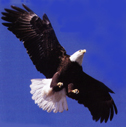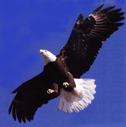|
The Soviet Franz Josef Land Overflight by Page 1 of 1 Page |
||||||
 |
 |
|||||
|
The navigators provided a heading for our return to Thule. I asked Goolsbee for climb power, started to climb and again leveled off at 18,000 feet. After leveling off the crew managed to relax a bit — at least they were less tense. The navigational procedures previously described were used for our return. Schureman diligently continued his electronic intelligence search for Soviet radar or any other electronic signals — all without results. Heiman was obtaining long-range images of the Greenland coast, and while over the Arctic Ocean, I alerted the gunners for a gunnery practice exercise, which was part of SAC's combat training requirements. I did not want to take any live rounds back to Thule. All of the ammunition for each turret was expended.
While inbound to Thule, the weather that would exist for landing, being unknown, was of considerable concern. Despite the cruise control procedures established by Goolsbee, our engineer, we knew that because of the additional fuel used for an unplanned second climb to 18,000 feet and the unavailability of approximately 700 gallons in the right pylon tank, that we would not have sufficient fuel to safely reach our alternate Air Base at Sondrestrom Fjord, 750 miles south of Thule. The thought of a possible zero-zero GCA landing, or one of Thule's famous 100 mile per hour winds leaving us no alternative but to make a gear up landing on the ice cap, occupied my mind. On approaching Thule, I started a descent leveling off at 8,000 feet. Having maintained radio silence throughout the mission I had no knowledge of the weather existing at the base. Considering the weather on takeoff, some 14 plus hours earlier, we had no assurance that it had improved. When almost over the field I broke radio silence and contacted the tower requesting weather and landing instructions. The tower reported that the weather was above landing minimums. I was relieved to know that with ground control approach, we would have no difficulty landing. Letting down to 6,000 feet, Heiman guided us out over Baffin Bay on radar. Continuing to let down, I made a procedure turn and proceeded inbound on the runway heading where, with GCA direction, the glide slope was intercepted. The very sharp approach team held us on the center line until, with almost no correction, we were over the threshold and able to see the runway. A normal landing was made. I had trimmed the aircraft to compensate for the nearly 4,500 pounds of fuel remaining in the right pylon tank. After taxiing to the ramp, we turned the aircraft over to our waiting ground crew. The rest of us headed for the barracks for chow and sleep. We had been at work for nearly 24 hours. I closed out my flight clearance with base operations, and then advised SAC headquarters of the mission completion. During the next two days, the maintenance and flight crews busied themselves cleaning the aircraft, the guns, and getting rid of ammunition belt links, etc. The maintenance crew installed a new booster pump in the right pylon tank, checked the engines, and serviced the fuel tanks. We were soon ready for our return to Barksdale Air Force Base as planned. On 20 September we made a 7:10 flight to Goose Bay. Departing Goose on the 21st, after a 10:15 flight we were at Barksdale AFB, our starting point. At Barksdale, on 22 September we made contact with intelligence officers from SAC to schedule a debriefing. Meanwhile, other intelligence personnel collected the photographic film that we unloaded, and made ready for the reconnaissance technical personnel. They also collected all of our radar film, photo logs, engineers flight logs, electronic reconnaissance tape recordings, Form One flight records, work sheets, etc. On the day of the debriefing, we presented and discussed in detail essentially what has been written in this narrative. The following points and conclusions were presented:
The debriefing intelligence officers seemed almost disappointed to learn that the Soviets had no military presence in Franz Josef Land. It was our impression, that they felt that they would have been better served, in the preparation and submission of their own reports, had we returned with positive electronic intercepts of Soviet radar, as well as photographs of an active Soviet air base. It was our considered opinion that they failed to properly interpret the positive intelligence data that we provided, or chose to ignore our reported fact, that the Soviet islands posed no threat. We provided solid Intelligence information that they could have obtained in no other way. We did not know what we would find in Franz Josef Land when we left Thule on 17 September. We did know what risks were, if attacked, or if we had an in-flight emergency with no place to go, and in that event, we would then be a long way from Thule without a prospect of recovery. Following the debriefing at Barksdale, we were left without a shred of evidence that would indicate that we had flown a reconnaissance mission over Franz Josef Land. Our letter orders did not set forth the location of our pre-overflight briefing, routes or ultimate destination. All directions and instructions were given verbally because of the sensitive security requirements of the project. Some weeks after returning to our home station at Forbes Air Force Base, the record of our flying time arrived in the form of a memo that included the points of takeoff and landing, as well as our round robin flight from Thule. Presumably the flying time portion of the Form One, which also included the names of the flight crew was destroyed. A copy of the temporary duty letter orders was located recently after a search of several months. Until that time, the names of our augmented crew members and support personnel could not be recalled. These orders and the flying time supplemental notation are the only known records supporting our Franz Josef Overflight. Despite a search of the National Archives, the debriefing records and film have not been located. We believe that the high classification and the political sensitivity of the directed, Presidentially approved, overflight promoted the immediate sanitization or destruction of all records associated with the mission. Whatever the disposition of the records and film, we kept this top-secret overflight to ourselves for nearly 50 years until informed that, along with other early Cold War overflights, it had been declassified. This narrative is based upon the best recollections of the living members — Lt. Col. Roy E. Kaden — Col. Grover G. Heiman — Major Earl E. Schureman and Senior Master Sergeant John D. Goolsbee. End Page 1 of 1 Page of Chapter 6 — Go to Epilogue You may go to Cover Page — Editor's Introduction & Prologue — Table of Contents Chapters — 1 — 2 — 3 — 4 — 5 — 6 — 7 Or, you may Go To — Additional WW II, Korean War and early Cold War |
||||||